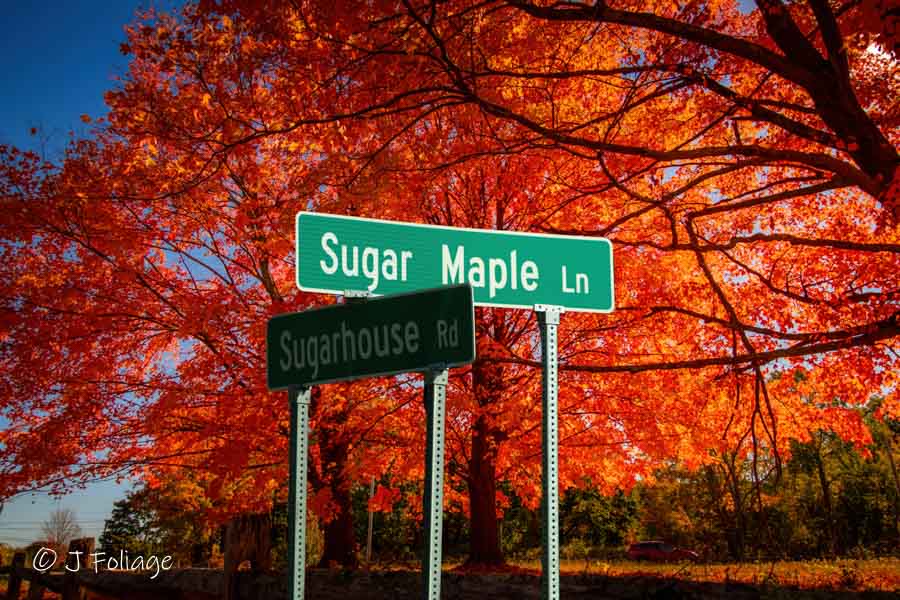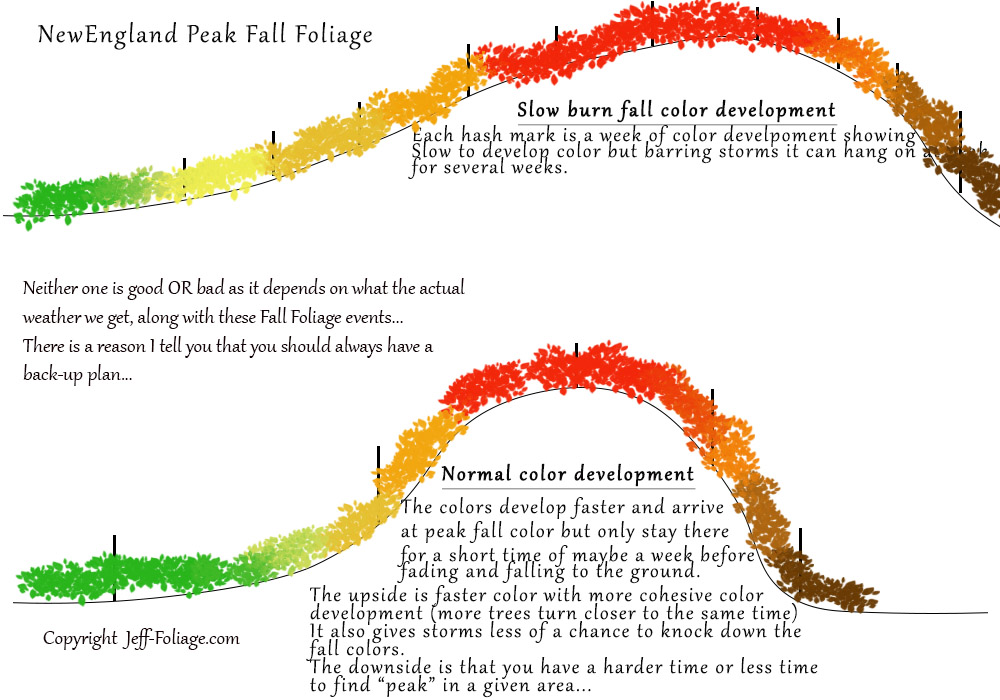A Fall Foliage Conversation…
Hi, Foliage fanatics! Someone posted in a group chat that they hate “Leaf Peepers”…?? Can you believe that?
I’m betting that this was someone who was trying to get somewhere on Columbus Day Weekend and didn’t want to wait.
What the Northeast needs are colder temps, DUH!
Climate change or seasonal fluctuations, no matter what you believe, the last 20 years have had some warmer falls than we had grown up with or read about. I’ve been watching it for a while now and in the early 2000’s we were seeing a hot first half of August but during the 2nd to 3rd week, it would break and get cool and comfortable.
Between 2003 and 2007 (except 2005) We would go into September in the upper to mid-70s and it ended with a few low 70s to upper 60s for high temps. And this was central New England which means Vermont, New Hampshire, and Maine was seasonably colder.
What makes the colors appear? (science stuff)
As the length of the days shorten and as we move through the fall, there are changes in the length of daylight and temperature, so the leaves stop their food-making process. The green color of the chlorophyll breaks down, carotenoids, which usually appear as yellow to orange, become visible and give the leaves a part of their fall splendor.
But, then, where do the reds come from?

During the fall and at the same time as the other chemical changes are happening, a different change may happen. Red maples and those trees that turn red may start to produce red anthocyanin pigments. One thought on why this may happen is this:
The autumn leaves turn fiery-red in an attempt to store up as many nutrients as possible from the leaves and soil before a tree settles down for the winter. The worse the quality of soil, the more effort a tree will put into recovering nutrients from its leaves. They start to produce anthocyanins, which are red to purple. Below are some of the trees in New England that can turn bright red or dark reds.
- Sugar Maple. Generally more orange and yellow but can add red to the mixture
- Red Maple. … This is where you get the scarlet red from
- Black Tupelo. … Not one I’ve identified but it is here in New England
- Sourwood. … again, same.
- Sassafras. … This one tends to be more orange and yellow in my experience.
- Sweetgum. American Sweetgum is a game changer. From purple to red, to orange, to yellow. All in the same tree and sometimes the same leaf.
Bright Fall Colors… What is the Secret?
There are a lot of opinions on this. Everything that follows is my opinion or what I’ve heard. First, bright sunny days from September through October with only a little rain. We would like the temps in Sept to start in the 70s and slowly drop to the 50s for highs in October. Now, here is the important part. We want the lows to start in the 50s but by the middle of September I really want it down to 35-38 degrees overnight. Frost-free is best but a night here or there with a light frost isn’t to bad for the fall colors.
Fall Foliage Time Table
This is generic for most years and I will also talk about to variations. A “normal fall foliage year versus a “slow burn” fall foliage year. First, in a generic year, I expect to see a slow decrease in temps during September. As we go into October we will continue to see a gradual decrease in temps into November. If we get 10 or fewer days of rain per month We are looking good. I would prefer 3-5 days of rain in Sept and October. This might give us a concentration of sugars in the leaves and with bright sunny days, it should produce incredibly bright colors.
A Slow Burn Year
Don’t look for this described elsewhere, I made the term up. Basically, it means the conditions are good but not perfectly timed. daytime temps in the low 80s to the low 70s swinging back and forth. The key temps which are the nighttime lows are in the low 60s and 50s. We might get occasional 40s or a 30 but once again we don’t see those into Oct except in upper elevations.
In a perfect Fall Foliage year…
The nightly temps drop into the low 40s and upper 30s (consistently) in Northern New England in early Sept and then we will see it build and flow southward during the last two weeks of September into Massachusetts and southern New England. (This would be read as early fall color! or wonderful)
I like it when POW! the fall colors bloom almost overnight… It’s incredible to see a real peak area and you won’t soon forget it… In fact, it will jade you forever because you’ll compare all future fall foliage by that one occurrence, always looking for something as good or better…

Fall Foliage Helpful Tools
I ran out of phone signal in Maine last weekend and I got lost and hit a dead-end road. It is a good idea to have a map book. and as always I recommend the Gazetteers.
Jeff Foliage Folger
Autumn is a state of mind more than a time of year – Jeff Foliage
- Visit my Fine Art America Gallery
- Visit my Amazon store to pick up New England-related materials
- Follow me on Bluesky
- My Facebook foliage page
- Threads.net/@Jeff_Foliage
- Follow our new Fall Foliage FB Group!
- You can visit Lisa’s Artist Facebook Page by clicking here


Well, that’s not very neighborly not to like leaf peepers! Besides those leaf peepers help bring in revenue from tourism. I love leaf peepers, they are my kind of people. Like Christmas shoppers, they are only temporary.
I don’t know Sharon, I’m a leaf peeper that keeps on going!!! In the grand scheme of things, I’m temporary but hopefully, I’ve got a few more miles in me…
Well, that’s not very neighborly not to like leaf peepers! Besides those leaf peepers help bring in revenue from tourism. I love leaf peepers, they are my kind of people. Like Christmas shoppers, they are only temporary.
I don’t know Sharon, I’m a leaf peeper that keeps on going!!! In the grand scheme of things, I’m temporary but hopefully, I’ve got a few more miles in me…